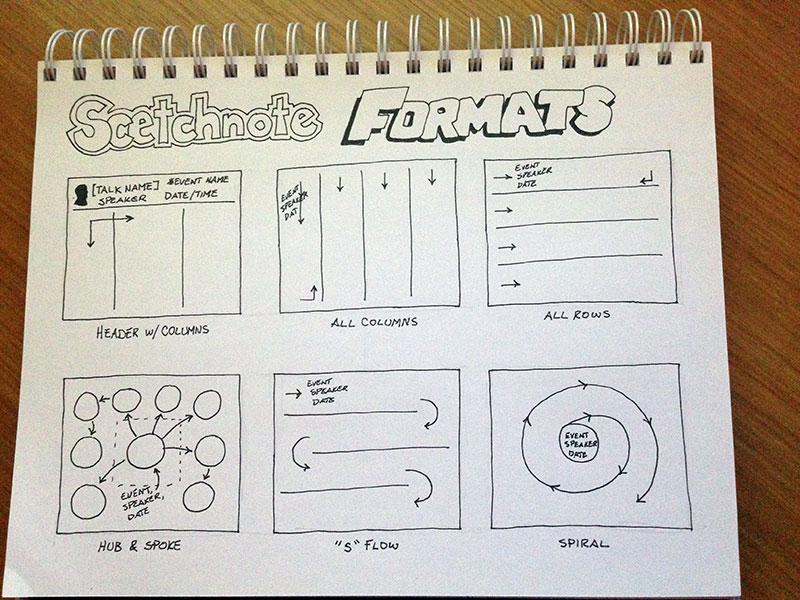This Week’s Topic in Focus: Sketchnotes
Each month our Digital Learning Team will feature a tool that is super cool while also super beneficial to your classroom. Here is the one we have on tap for you this week!
Image acquired from: Social Studies Megastore
Sketchnotes - A strategy to promote active learning in a passive environment.
One strategy to combine a passive experience with an active learning task is Sketchnoting. Sketchnotes are a visual way for learners to communicate and synthesize what they are thinking about as it relates to what they are receiving through passive means.
Learners can use paper and pencil/pen to create sketchnotes or use snazzy tech tools instead. That low tech paper and pencil sketchnote can be shared with an authentic audience by using a camera on a phone or a scanner to create a digital copy. This allows the file to be shared via social media or through a discussion thread in an LMS such as Schoology.
There are also several Android, iOS and web based tools that can be used to create Sketchnotes on an electronic device. The best devices for sketchnoting are touch sensitive but electronic sketchnoting without a touch sensitive device is still possible although it does become more of a mapping task instead.
Pedagogy - The why behind promoting active learning.
When a student is simply listening, reading or watching information being presented to him/her this is considered a passive learning task. Passive learning tasks are extremely efficient in disseminating information but equally ineffective in accomplishing high levels of retention. Active learning tasks that require learners to engage with the content in some form of communicative or experiential manner promote extremely high retention rates. Unfortunately these activities are not very efficient in the rate at which content gets disseminated. Bottom line: Passive learning is quick but ineffective, Active learning is time consuming but potent.
Acquire from: lo.unisa.edu.au
It is imperative that we as educators provide as many active learning experiences for our learners as we possibly can, but the reality is that content dissemination efficiency is also a critical element of our profession. We all have a large number of learning targets, goals and outcomes that must be reached by a certain amount of time regardless of our disciplines or content areas. Passive learning is gainful when information is first being introduced. It can also be beneficial when a large volume of content is being reviewed. Another key point that should be recognized, as indicated in the research performed by the National Training Laboratories and represented in the Learning Pyramid included above, is that not all passive learning experiences are equally ineffective. E.G. Quality lecture based instruction yields a 5% ARR (average retention rate) while quality audio-visual based instruction yields a 20% ARR which is a 300% overall change in retention.
Further increases to the ARR can be found when passive learning experiences are combined with active learning experiences. A myriad of research in both k-12 and postsecondary education has indicated that flipping or inverting instruction in order to combine passive learning with active elements along with re-purposing class time to engage in fully active learning tasks has extremely high returns per the time invested. One study reports as much as a 60% reduction in failure rates within a given targeted course when instruction was shifted to an inverted format that included active elements and re-purposed class time that was used for active learning experiences.
There are so many resources out there on sketchnoting. A great place to start is by taking a look at all of the links I have embedded throughout this post. You can also watch Taking Visual Notes with Sketchnotes: An EdTechTeam Session on Air with Brad Ovenell-Carter.


Need inspiration or help developing your drawing skills? Start by searching for sketchnote guides. If you find something extremely helpful included it in the comments section of this posting. Here is a nice set of pics that can help get you started: Ten Sketchnote Tips.
Contributed by Kyle Mack @ProfKyleMack
FHSD educators: Contact your building’s Digital Learning Specialist for assistance and coaching if you would like to implement voice and choice with Sketchnoting for your classroom learners...
All educators: Feel free to use the comment feature to share how you are currently using sketchnotes or other visible and active learning approaches in your classroom, or propose an innovative idea based upon what you have learned from this article or other resources related to sketchnotes.
No comments:
Post a Comment